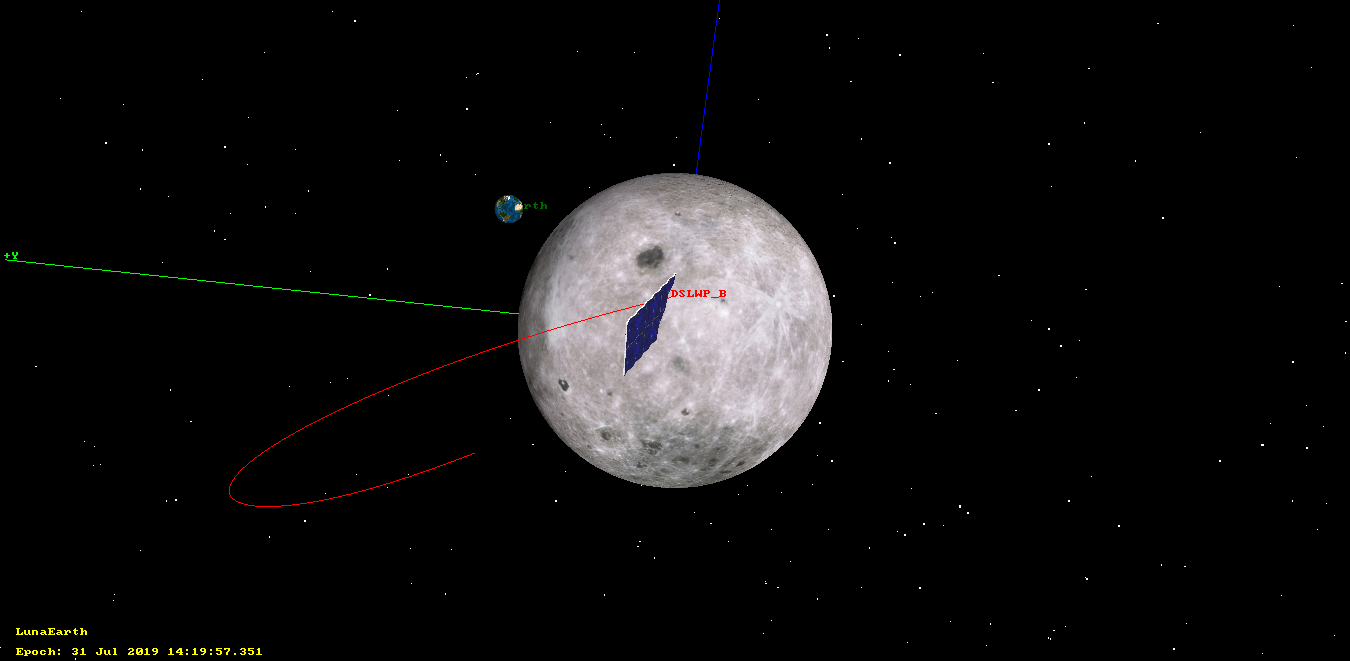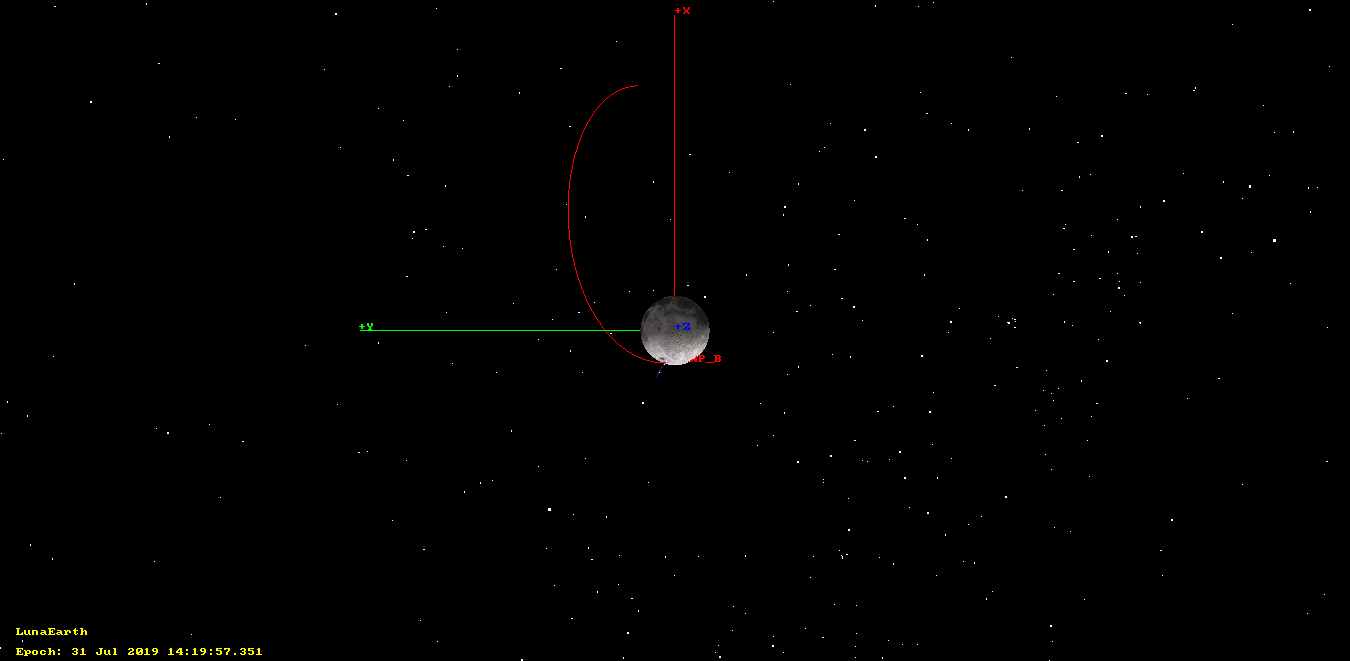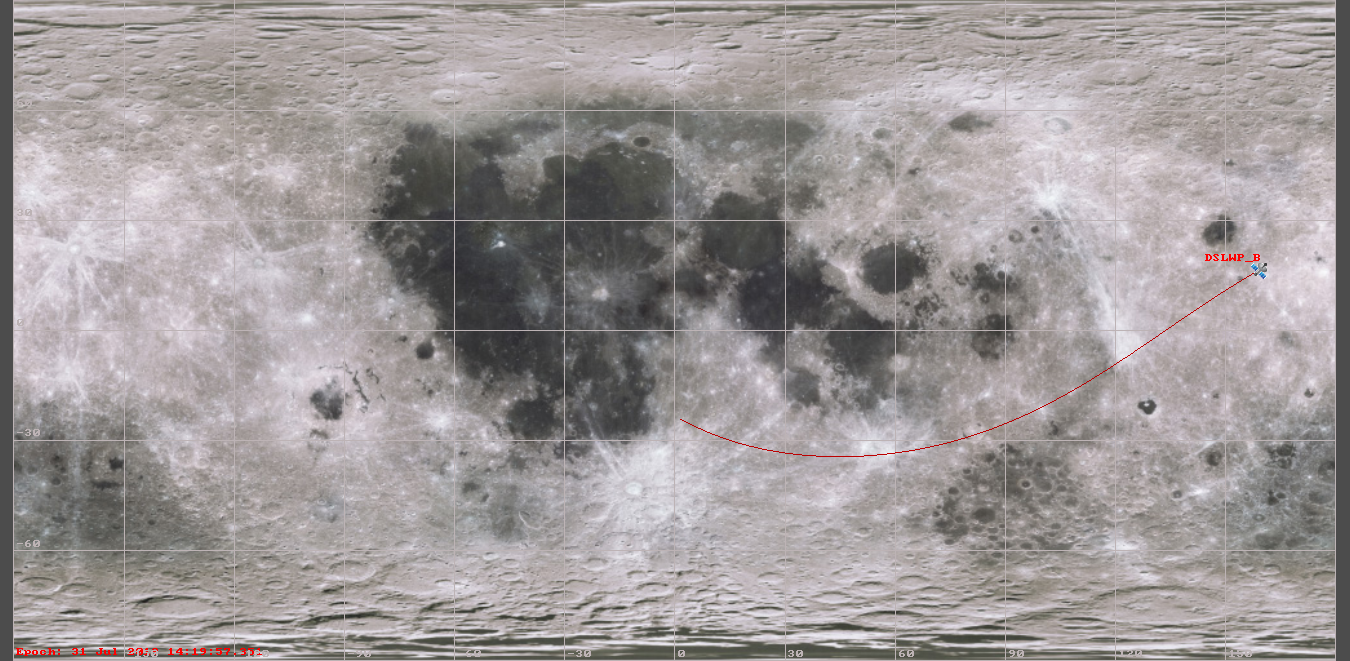Back in May, I spoke about the future collision of DSLWP-B with the lunar surface. It would happen on July 31, thus putting and end to the mission. Now that the impact date is near, I have run again the calculations with the latest ephemeris in order to have an accurate simulation of the event.
The ephemeris I’m using consist of a Moon centred ICRF Keplerian state vector which has been shared by Wei Mingchuan BG2BHC. In GMAT, this state vector is as follows:
DSLWP_B.Epoch = '25 Jul 2019 02:30:00.000'; DSLWP_B.CoordinateSystem = LunaICRF; DSLWP_B.SMA = 8708.404; DSLWP_B.ECC = 0.747921; DSLWP_B.INC = 44.157; DSLWP_B.RAAN = 52.405; DSLWP_B.AOP = 86.261; DSLWP_B.TA = 165.00062091131025;
Using this GMAT script, I have obtained that the impact will happen on 2019-07-31 14:19:57 UTC, near Mare Moscoviense, in the lunar far side. This result is quite close to the calculations I did in May, which predicted an impact at 14:47 UTC.
The images below show the impact simulation in GMAT. Since the impact happens on the far side of the Moon, it will not be visible from Earth. There is an activation of the Amateur payload onboard DSLWP-B for 2019-07-31 13:24 to 15:24 UTC. The satellite will hide behind the Moon around 14:08 UTC. If the Moon was not solid, DSLWP-B would reappear around 14:35 UTC. The absence of radio signals after this moment will confirm that the impact has occurred.



Thanks, Daniel. That looks like approximately 15.5 degrees north,
157.5 degrees east. It’s about 300 km north of NASA’s Lunar Orbiter 1 impact site.